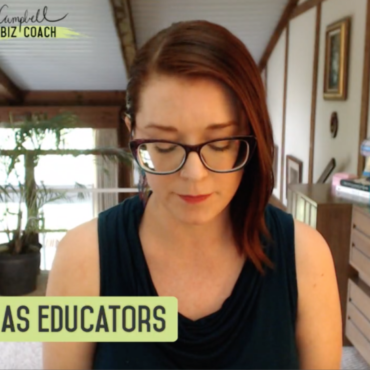3 Off Bench Activities for Young Piano Students

Finding “off bench” activities for very young piano students can sometimes feel a little bit tricky. They don’t have enough music theory knowledge to play the games you use with regular beginners, and most of the cool music apps out there are too tricky for them to use just yet.
Here are a few activities that I keep in my toolbox to help my piano littles avoid getting restless or bored during lesson time… and two downloadable freebies at the bottom of the post. Skip to the downloads!
#1: Imagination Time: Playing Conductor

Conducting patterns are easy to draw!
Conducting is one of my favorite ways to teach the concept of triple verses duple, plus it lets you bring some imagination time into your lesson.
About the book: I’ve had this copy of The Story of the Orchestra by Robert Levine for years. We use this as a reference book whenever a student has a question about how an instrument works or when it was invented, and the recordings it comes with are fantastic.
It’s available at Barnes and Nobles, and used copies are on Amazon. You don’t need this book for this activity — just find some good recordings on YouTube.
Here’s how I like to organize this activity:
- Make some conductor batons out of un-sharpened pencils, chopsticks, or anything else that you have around the house. Pick a piece of music you want to conduct — make sure it’s in the appropriate time signature.
- Draw the conducting pattern that you want to use on a piece of paper. Use numbers to indicate where the beats fall. If your student is old enough to copy the image, have them create their own. You may need to help very young students draw the shape! 😉
- Imagination time: Start playing a piece of music and have your student imagine where the orchestra is in your studio. Ask them questions to prompt this creation: What do you hear? What do you see? How many violins are in this orchestra?
- Pause the music and guide your student through the appropriate conducting pattern. The motions don’t have to be perfect if they’re really young. As long as they’re moving the baton to the beat, that’s the important part!
- Restart the music and conduct with your student… remind them about which instruments they have to queue in as you stand in front of your imaginary orchestra: Now point to the clarinets!
#2: Get Up and MOVE with Shaker Improvisation

Love these “Skip, Hop, Explore” shakers! They each make a different tone. I’m pretty sure the Fox is they one they call Skip. 🙂
How about some improvisation with your little piano student? Yep. I said improvisation. Err… wrote it. Typed it. (You get the picture.) Don’t worry, little students are great at this kind of activity. Plus, this improvisation will be structured.
Here’s how the Shaker Improvisation works:
- Choose an easy rhythm pattern to practice with your student. (Ex: quarter, two-eighths, quarter, quarter) Teach your student to vocalize them with the Kodály words: TA – ti – ti – TA – TA. Practice tapping and saying the rhythm together.
- Perform the rhythm together, using the Kodály counts and shaking the rhythm with egg shakers. (Perfect for little hands!) Don’t forget to move around! Move with the rhythm, do a little dance… get a little silly.
- Duet Time: Accompany your student on the piano with something upbeat in 4/4. Your student will be in charge of the shakers — keep counting with them as you both play. Tip: If your student has trouble keeping their rhythm, play that rhythm as the melody in your accompaniment.
- Improv: Once you get into the groove, let your student make up their own rhythm with ti – ti’s and TA’s. Have fun with it 🙂
#3: Technology Time with an Interactive Book
I’m absolutely tickled about this app. My First Orchestra is basically a walk-through story book. It has beautiful illustrations, lots of information, and lots of recordings of what the instruments sound like as a solo and in the orchestra. At $3.99, it’s a great bargain.

As an MM in Musicology, I’m a big fan of this resource. It was made by Naxos, so you *know* the recordings and information are top notch. It’s like a music nerd’s dream come true.
Everything in the app is clickable — the text will read, the instruments will play, and best of all: your guide is a little green troll. Yep. A little green troll named Tormod who comes from a mountain top in Norway.
Here’s how I use this app:
- This would be great in partner lessons. Have your students spend a small amount of each lesson learning about the different instruments and taking turns clicking on the illustrations and words. Encourage discussion about what you’re hearing and seeing!
- As an activity for your solo student to do while you jot down any practice notes for the week, or if you need a “wind down” activity together at the end of a busy lesson.
- Another Upbeat Piano Teacher suggested to use the app as part of a music lab. I don’t have mine set up yet, but I think it’s a great idea! She said even her middle schoolers loved it. (Thanks for the tip, Lou Ann!)
- Don’t forget to protect your iPad while young ones are using it. There’s nothing sadder than a cracked screen.
Downloadable Freebies!
I hope you find these three “Rainy Day” activities useful in your studio. Here’s an easy PDF printable that you can use in your studio.
If you’re looking for a way to organize your activities for little piano students, you should also check out this free resource I made last week for my Upbeat Piano Teachers:
The Rainy Day Toolbox comes with
- A colorful cover for your binder
- Tips to keep your materials organized
- 4 seasonal charts with 5 different categories each
P.S. Looking for more blogs about teaching little piano students? Pianosaurus Rex found a new home, and Bridey’s coming back to blogging! I’m so excited. Make sure to sign up for her Free Resource Library. She’ll be adding resources each month.
P.P.S. Here’s a 5 Day Email Course you should also check out from The Domestic Musician: it’s all about integrating music into different disciplines like arts, math, science, social studies, and language arts.
What kind of off bench activities do you use with your littles? Share in the comments below!
Stay Tuned — Enter your Email at the top right for updates








